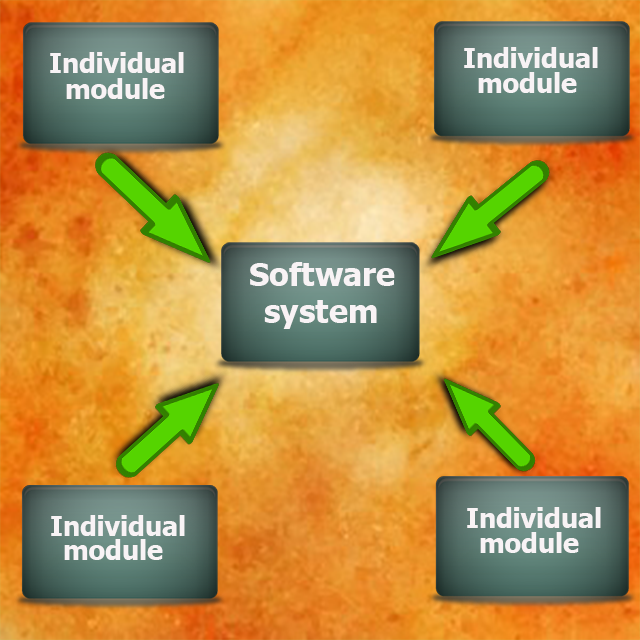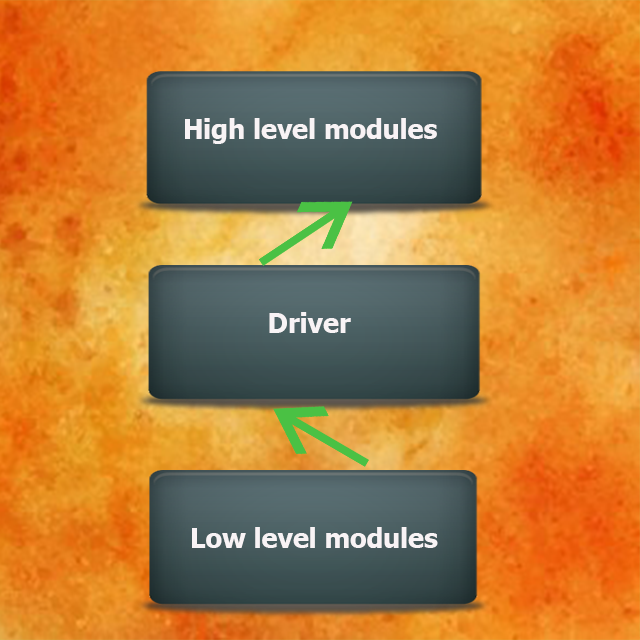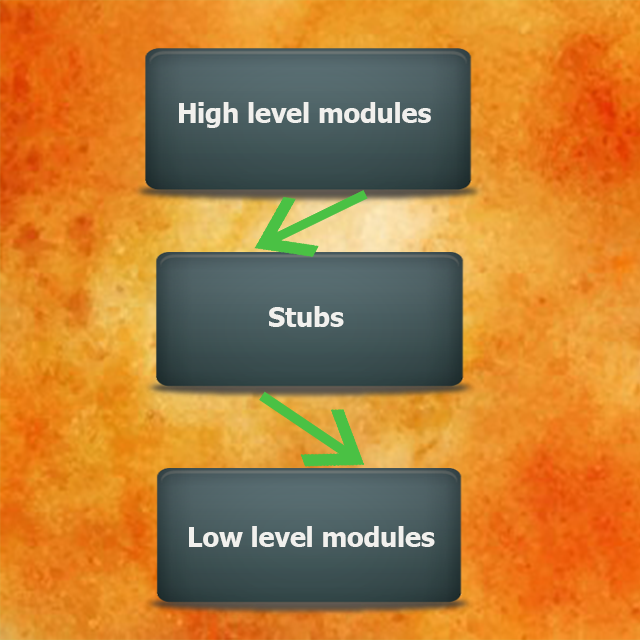All modern innovations make our life easier. Today we can do almost everything with one click. But we should remember that such a result requires qualitative and active logic which can be valid even at the most critical moments.
Surely, after a while, developed technologies can work not so good as it was supposed initially. Moreover, the results of any software usage may not meet the stated requirements. All this proves that any software testing is extremely important.
In order to understand integration testing, we must deal with the traditional software testing process in the first place. So, software testing is a specific activity that checks if the developers meet all the requirements on the current web product or not.
In other words, the actual result of software performance should be the same as the expected one. Otherwise, specialists must edit the software structure or rewrite the code.
We can test the software performance at different levels. The main of them are:

Levels of software testing
According to this order, we perform the integration testing right after unit tests execution. If we analyze the meaning of “integration” concept, then it will be clear that integration testing is based on program modules checking which are put together in special groups. The general concept of the program system includes precisely these components.
We check any programming system as one strong unit, and such a process is called integration testing. Its main task is to check different system modules during their system unification.
Integration testing is a part of white box and black box testing. Nowadays most companies prefer to execute testing based on unit and functional checks.
Different Types and Approaches to Integration Testing
There are 4 main types and approaches to integration testing process. Further, we will analyze them in some detail.
Integration testing types include:
- Big bang approach;
- Bottom-Up approach;
- Top-Down approach;
- Hybrid/Sandwich approach.
Big bang approach
The software development process requires a connection between created and programmed modules and system components. After unification, we test these modules as a single whole. Subsequently, we may check all the modules together even if the whole program system is not created yet.
You may wonder, what’s the difference between general software testing and modules integration testing? It’s simple! We test separate modules in case of integration testing. But if we are talking about the whole software testing then there’s checking of all the system parameters.
In the picture below you can see the meaning of Big bang approach during the integration tests execution.

Big bang approach
By the way, such an approach has some advantages and disadvantages.
The main advantages are:
- It is easy to use if you test small systems;
- You can quickly find the bugs meaning a great time-saving which you can spend on the development and improvement of already working functionality.
Disadvantages are:
- As the modules are connected to one system, sometimes it is difficult to find the source of bugs.
- If the system uses a lot of modules, it can take much time to look through all the represented functionalities.
Bottom-Up Approach
Such an approach is based on low-level systems testing at first: together and separately. In other words, the testing process starts with internal level and gradually comes to the most critical points.
In the scheme below you can see that modules of a higher level cannot be integrated into the software till the low-level modules aren’t tested.

Bottom-Up approach
With this approach, you can use Driver which is some kind of “connector” between the modules of low level and high level.
The advantages of such an approach are:
- We can create certain modules with the help of integration testing method based on “bottom-up” scheme. It is because testing of the most critical points starts from the checks of low-level modules.
- If some module becomes faulty, its bug can be fixed right away.
- It takes minimum time to identify and fix defects.
Also, it has the following disadvantages:
- It takes too much time to check all the modules because we cannot release the product until all of them from low level to high level won’t be tested.
- If the software contains a lot of small low-level modules which are hard to be implemented, then you need more time to complete the software testing process.
Top-Down Approach
It is quite the opposite of the approach that we described above. The point is to test all the high-level modules at first. And only after this, QA specialists can proceed with the low-level modules testing.
We test most of the modules at a low level separately and then we may proceed with checking the realized modules together. In a manner similar to the Bottom-Up Approach, such a method also depends on the special connecting function which is called Stubs.
Stubs are the special logical operators with the short program code. We use them for the input data reception by low-level modules from the high-level ones during the integration testing.

Top-Down approach
Its advantages are:
- It is easy to find the defects in the system performance.
- QA engineers test important modules firstly, and only after this, they proceed with the low-level modules.
- There is a short time for integration testing, in comparison with other approaches.
This approach has such disadvantages as:
- If the low-level modules contain some important logic, it cannot be tested until the high level will not be checked.
- Stubs usage becomes compulsory on all future projects.
Hybrid/Sandwich Approach
Such an approach is also called mixed integration testing.
The logic of both approaches Bottom-Up and Top-Down is united in this method. It means that we can consider it as a mixed approach for integration testing.
So, QA specialists test the highest module separately, as well as they integrate and check all the low-level modules along with high-level ones.
The advantage is:
- It is a perfect option for big projects which last for a long time.
Its disadvantage is:
- А high price for such testing because this approach includes several modules of integration testing performance.
Huge Advantages of Integration Testing
Usage of simultaneous testing method for different modules is very simple, usable, and not so expensive process in comparison with other types of tests.
We can use integration tests at any stage of software development and testing. In comparison with other kinds of tests, these ones can deal with any sizes of program code at one sprint due to bottom-up and top-down approaches.
Undoubtedly, it is significantly important to use integration testing on those projects where development requirements are changeable, and the structure of created logic can be edited many times.
Why Should You Use Integration Testing Even Today?
People who work in IT sphere know that the working atmosphere on projects can be very changeable. Every day some of the requirements may be reviewed, edited or removed.
All this causes the situation when many lines of program code appear, and QA must test this code anyway on the requirements that were set before.
The ideal tool for such purposes is integration testing which allows classifying program code into blocks (modules). Software testing integration is very important because only the functioning and qualitative product should be released. And its liquidity has to be a maximum one (according to the theory).
Examples of Integration Testing
For the effective visualization of the example let’s imagine that we’re working on software for employees’ personal accounts in some corporation.
So, our program will have the following structural modules:
- Worker’s login;
- Employees’ work reports;
- Page with salary and the level of tax remissions.
When we start working on a product at the very beginning, we create a logic of worker registration and authorization (pages with the forms to enter the login and password). If the registration and verification were correct, the client has to be redirected to his/her account by the system (to the page with personal records).
But if the data was entered and the client didn’t go to the page with personal data, then the system has some defect. That’s why we use integration testing: in order to find and fix this error of created logic.
We can give one more situation as another example of integration testing.
Users check their emails every day. All the email clients have to be a single set of functionalities (personal account – incoming-outgoing mails – junk mail folder – log out).
So, if we have servers of mail agents, we can start with the simple unit tests. After this, if the login information was correct, the verification on the login page will direct us to the incoming mails page. And if it doesn’t happen, you have to use integration tests in order to understand what’s the problem.
Conclusion
In the modern IT world, a need to constantly perform integration testing becomes more relevant and popular. We can use such a kind of testing in both big and small projects with different focuses, taking into account the module flexibility of integrations.
Daily practice of using the integration testing lets the client get the maximum commercial profit for their web product. Likewise, a QA company that provides web testing services use only safe and effective software verification tools.










Leave A Comment